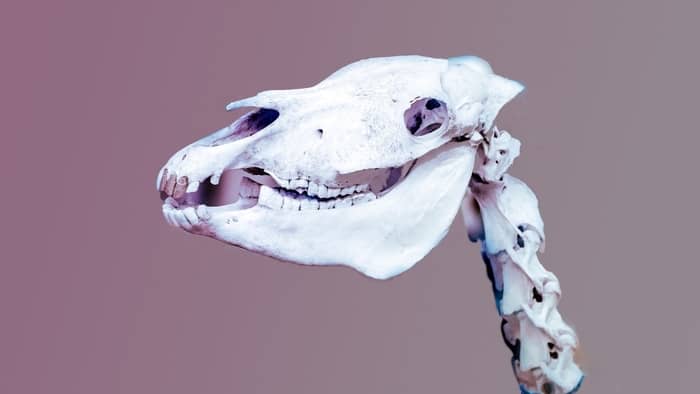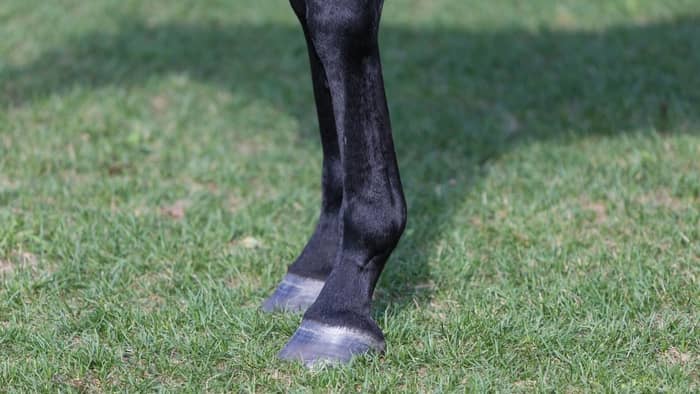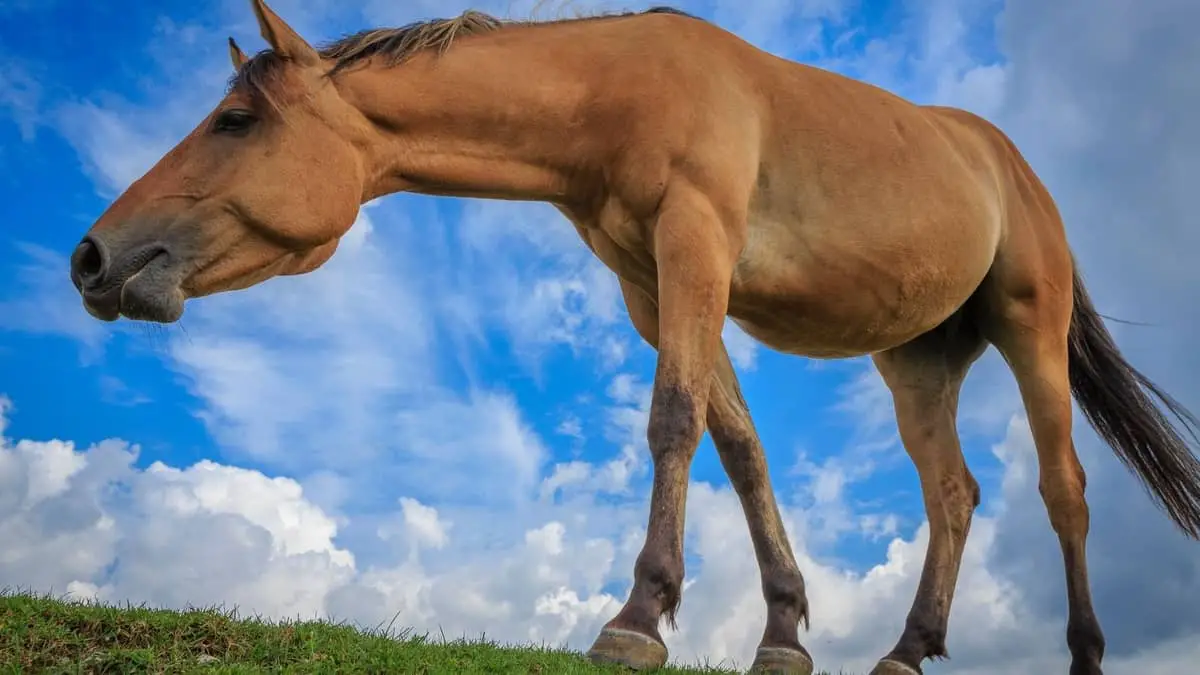Last Updated on January 9, 2022
If you are learning about horses, then a great place to start is horse anatomy! But what are the 15 main parts of a horse?
Let’s take a look!
15 Main Parts Of A Horse
If you are learning about horse anatomy, you may be asked to identify the 15 main parts of a horse. This is a common question in horsemanship tests, such as those used in the U.S Scouting Service Project.
When it comes to horse anatomy, it can be very confusing when different names are used for the same part of a horse. This often happens when you have a colloquial name, used by horsemen, and an anatomical term, used by veterinarians. Here we will identify both names to help avoid any mix-ups.

Here is your definitive guide to the 15 main parts of a horse:
1. Muzzle
The muzzle of the horse is the part of the head that consists of the mouth, lips, nostrils, and chin. The muzzle of a horse is very important, as it allows the horse to carry out a range of different functions.
These functions include selecting food to eat, smelling different scents, inhaling and exhaling air, and communicating through the use of noise.
2. Poll
The poll of a horse is the area just behind the ears, at the top of the neck. This lies over the bones that attach the skull to the body and marks the start of the spine.
Horses have a large number of nerve endings and pressure points at the poll and can be very sensitive if touched in this area. The part of the mane lying over the poll is often clipped short to make the bridle or halter more comfortable.
3. Crest
The crest of a horse is the line that runs along the top of the neck. This starts just behind the ears, at the poll, and ends at the withers at the base of the neck.
The size of a horse’s crest varies according to its breed and gender. Coldblooded breeds tend to have wider crests, and stallions have a pronounced curved crest.
4. Withers
The withers of a horse are the bony prominences at the base of the neck, just in front of where the saddle sits. They are formed by the tallest of the thoracic vertebrae.
When the height of a horse is measured, the withers are used as the point of reference. This is because they are the most consistent area in terms of height.
The size of the withers also affects how a saddle is fitted to the horse. The gullet of the saddle must be high enough to sit clear of the withers, otherwise, it will rub and cause painful sores.
5. Croup
The croup is the highest point of the horse’s back, located on the rump or hindquarters. The croup marks the pelvis area of the horse.
6. Dock
The dock is the solid part of the tail, from which the hair grows. This is actually an extension of the horse’s spine and contains many tiny vertebrae.
7. Girth
The girth is the area around the underneath of the abdomen, just behind the forelimbs. This is where the saddle is secured to the horse, using a strap also called a girth.
8. Barrel
The barrel is the abdominal area of the horse, identified as the area encapsulated by the ribcage. This surrounds the vital organs of the horse.
The barrel lies between the girth area and the flank.
9. Flank
The flank is the area behind the barrel, where the ribcage ends. You can identify the flank as the area that moves the most when the horse breathes.
10. Fetlock
A horse has four fetlocks, one at the bottom of each leg. They are the small, rounded joint just above the pastern. The fetlock is also referred to as the metacarpophalangeal joint in the forelimb, and the metatarsophalangeal joint in the hindlimb.
11. Hock
The hock is the joint midway down a horse’s hind leg. It is an angular joint made up of several tiny bones. The hock is part of a powerful system of bones, muscles, and tendons that gives a horse its impressive speed and jumping ability.
At the hock, the tibia and fibula join onto the metacarpal bones. The middle metacarpal bone, which is also the thickest, is also referred to as the cannon bone. The hock itself is also called the tarsometatarsal joint.
12. Pastern
The horse’s pastern is a set of sloping bones at the lower part of each leg. The pastern sits just below the fetlock joint, above the hoof. This joint has incredible flexibility and shock absorption mechanisms which are invaluable when the horse is running or jumping.
The pastern is made up of two bones called the long pastern and the short pastern. You may also hear these referred to as the first and second phalanx. There is a third phalanx called the coffin bone that attaches onto the bottom of the pastern, this lies within the hoof itself.
13. Coronet Band
The coronet band is the line around the top of the hoof wall. This is where new horn tissue is developed. The coronet band is very sensitive and can be easily injured.
14. Gaskin
The gaskin is the large muscular area overlying the tibia and fibula in the hindlegs. These are the bones that run between the hock and the stifle joints.

15. Stifle
If you look at the hind leg of a horse, the stifle is the highest joint below the pelvis. It is a large joint and sits about level with the horse’s abdomen.
At the stifle, the two large bones meet – the tibia and the femur. The stifle joint bends forwards when the horse lifts his leg, in the same way as the human knee.
The stifle is also called the femoral tibial joint.
Summary
We hope you’ve enjoyed our guide to the 15 main parts of a horse! As we have learned, the language used for horse anatomy can be very confusing, so hopefully, we’ve cleared up any misunderstandings.
We’d love to hear your tricks for learning about the main parts of a horse and would be happy to answer any questions you might have. Please add a comment below and we’ll get back to you!

Kate Chalmers is a qualified veterinary nurse who has specialized in horse care for the vast majority of her career. She has been around horses since she was a child, starting out riding ponies and helping out at the local stables before going on to college to study Horse Care & Management. She has backed and trained many horses during her lifetime and competed in various equestrian sports at different levels.
After Kate qualified as a veterinary nurse, she provided nursing care to the patients of a large equine veterinary hospital for many years. She then went on to teach horse care and veterinary nursing at one of the top colleges in the country. This has led to an in-depth knowledge of the care needs of horses and their various medical ailments, as well as a life-long passion for educating horse owners on how to provide the best possible care for their four-legged friends.
Kate Chalmers BSc (Hons) CVN, Dip AVN (Equine) Dip HE CVN EVN VN A1 PGCE


